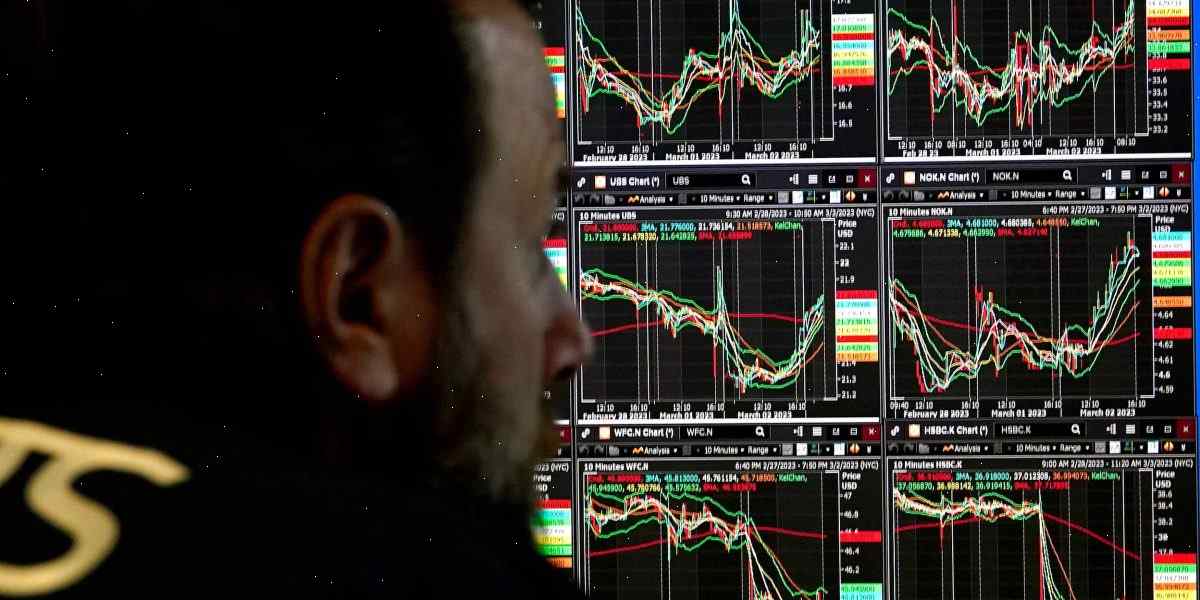As the world grapples with the challenges of COVID-19, climate change, and geopolitical tensions, another force is quietly reshaping the global economic landscape: long-term interest rates. These rates have been steadily climbing, leaving many to wonder if they could trigger a recession or if they signal a stronger economy. In this article, we’ll explore the implications of rising interest rates and what they mean for individuals, businesses, and governments alike.
The Curious Case of Rising Interest Rates
Long-term interest rates refer to the cost of borrowing money over extended periods, typically ten years or more. Governments and corporations issue bonds with fixed interest rates to raise capital for various purposes, such as infrastructure projects or expansion plans. When investors buy these bonds, they expect a certain return on their investment, which is influenced by several factors, including inflation, economic growth, and central bank policies.
In recent months, long-term interest rates have surged across the globe, particularly in developed economies like the United States, Europe, and Japan. For instance, the yield on 10-year US Treasury bonds has increased by over 20% since January 2022, reaching levels last seen in 2018. Similarly, yields on German bunds and Japanese government bonds have also risen significantly.
What’s Behind the Spike in Interest Rates?
There are several reasons behind the sudden increase in long-term interest rates. One key factor is the improving global economy, which has led to higher demand for credit and, subsequently, higher interest rates. As businesses and consumers become more confident in the economy’s prospects, they’re more likely to take out loans to fund new ventures or expand existing operations. This increased demand for credit drives up interest rates, as lenders can command higher returns for their money.
Another significant driver of rising interest rates is the changing monetary policy stance of central banks. In the wake of the financial crisis, central banks implemented unprecedented measures to stimulate economic growth, including quantitative easing and negative interest rates. However, as the economy continues to recover, central banks are now reversing course and normalizing their policies. This means reducing the supply of cheap money, which in turn pushes up interest rates.
The Impact of Higher Interest Rates
So, what does this mean for individuals, businesses, and governments? The answer depends on various factors, but here are some potential consequences:
1. Borrowing Costs: With higher interest rates, borrowing becomes more expensive. Individuals looking to take out mortgages, car loans, or personal loans will face higher monthly payments. Businesses may also find it more costly to finance their operations or invest in new projects. Governments, too, will need to shell out more money to service their debt. 2. Investment Opportunities: On the flip side, higher interest rates can create attractive investment opportunities for those seeking steady income streams. Bond yields are becoming more appealing, especially compared to the low-interest environment of recent years. This could lead to increased demand for bonds, potentially driving down bond prices and further boosting yields. 3. Exchange Rates: Rising interest rates can impact currency exchange rates, making exports cheaper and imports dearer. This could benefit countries with strong export sectors, while those reliant on imports might struggle with increased costs. 4. Inflation Concerns: Higher interest rates often go hand-in-hand with heightened inflation concerns. As borrowing costs rise, businesses may pass on increased production expenses to consumers through higher prices. This could lead to a self-perpetuating cycle of inflation, prompting central banks to raise interest rates even further to combat it. 5. Recession Fears: Some experts worry that rising interest rates could tip the scales toward recession. Higher borrowing costs can choke off economic growth, particularly in countries with already high levels of household and corporate debt. If consumers and businesses retrench, it could lead to reduced consumer spending, lower investment, and ultimately, a slowdown in economic activity.
A Sign of Strength or a Harbinger of Doom?
Despite the potential drawbacks,

